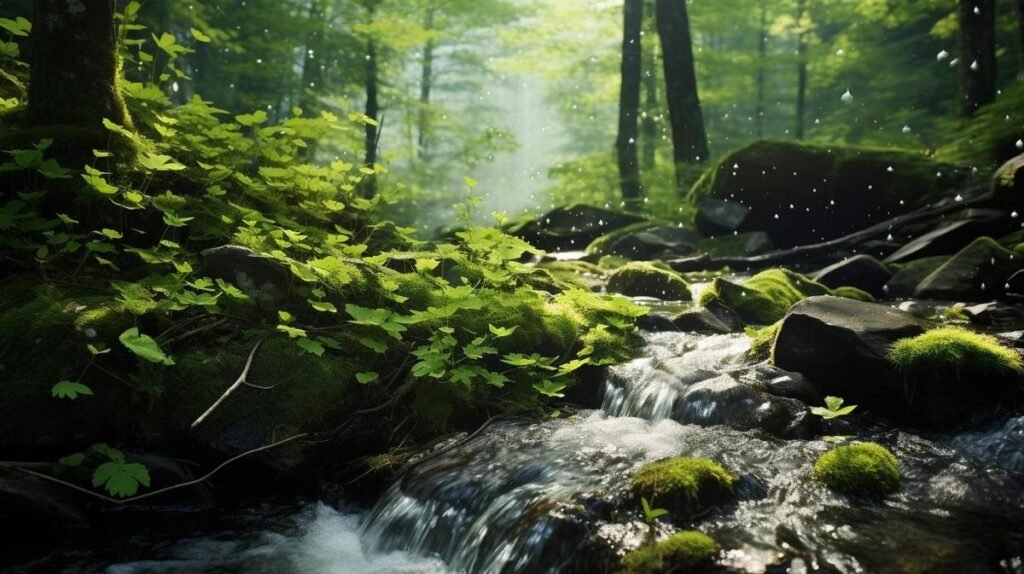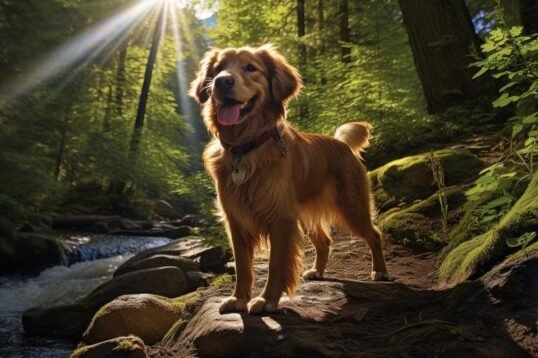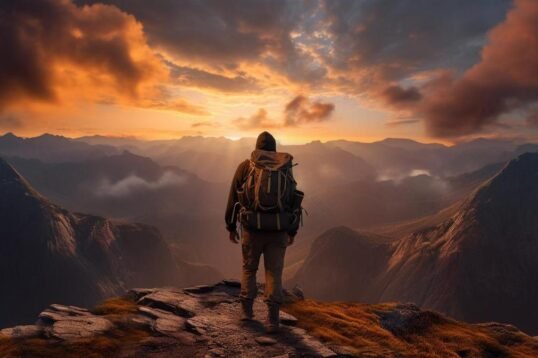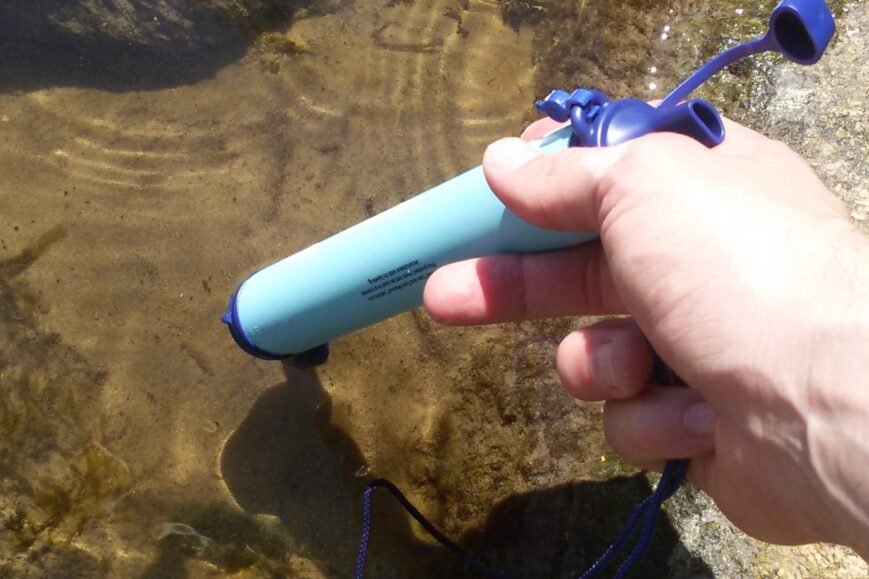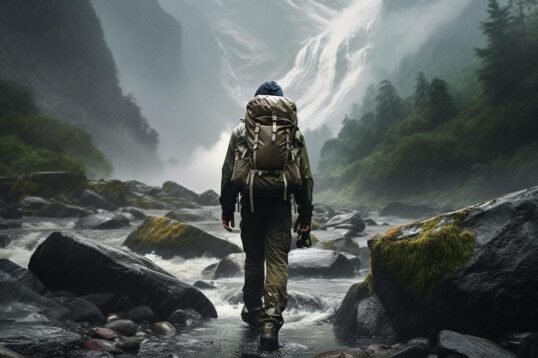- Leave No Trace is an environmental philosophy advocating for outdoor enjoyment without damaging nature, originating in the 1960s.
- The philosophy encompasses 7 principles: plan ahead, travel on durable surfaces, dispose of waste properly, leave nature as you find it, minimize campfire impacts, respect wildlife, and be considerate of others.
- To respect wildlife, observe from a distance, don’t feed them, keep noise low, and minimize impact on their habitats.
- Waste disposal involves packing out all trash, using eco-friendly products, safely managing campfires, and discreetly handling human waste.
- Education about Leave No Trace is done through trainer courses, engaging learning tools, and hands-on community activities.
- Environmental stewardship and volunteerism align with Leave No Trace by involving community efforts in maintaining natural areas.
- High-use recreational areas benefit from Leave No Trace by preserving trails, protecting water sources, and implementing solutions for overcrowded sites.
- Integrating Leave No Trace with outdoor skills training enhances responsible exploration and ensures minimal impact on the environment.
Hey adventurers! Ready to trek smart and leave no footprints? We’re diving into the Leave No Trace philosophy. It’s not just about keeping places nice. It’s big—we’re talking about respecting nature, being good stewards of the environment, and being outdoorsy without a trace. Want the scoop on how to explore without harm? Keep reading and become a nature ninja!
What Is the Leave No Trace Philosophy?
What is the meaning of Leave No Trace? It’s about caring for nature. It tells us to enjoy outdoor spaces without harming them. To respect the wild, we keep it clean and unharmed by our visit. This means we take out all trash and stay on trails. We also camp in the right spots and are kind to plants and animals. When we leave, we want it to look like we were never there.
The Leave No Trace philosophy began in the 1960s. Back then, more people started to visit wild places. They saw areas getting harmed and knew they must act. Groups like the US Forest Service took the lead. They shared ideas on how to care for the wild. Over time, these ideas grew into a bigger movement.
Respecting nature is a big part of Leave No Trace. When we go outside, it’s our job to protect it. That way, plants, animals, and future visitors can enjoy it too. Leave No Trace helps us do this. It is our guide to loving the wild in the right way.
Leave No Trace is not just a set of rules. It’s also about caring for the earth every day. We call this environmental stewardship. It means we all help to look after nature. We fix trails, clean up lakes, and teach others how to be outside in good ways. This is how we show that we love the earth and keep it safe for everyone.
How Can You Practice the 7 Principles of Leave No Trace?
What are the 7 principles of Leave No Trace? The seven principles are:
- Plan ahead and prepare
- Travel and camp on durable surfaces
- Dispose of waste properly
- Leave what you find
- Minimize campfire impacts
- Respect wildlife
- Be considerate of other visitors
These principles guide our outdoor behavior to keep nature clean and safe.
How do these principles guide sustainable outdoor activities? They teach us to enjoy nature while making sure it stays nice for others. If we all follow these rules, we keep the wild places we love in good shape for the future.
- Overview of the 7 principles
These seven rules help us make less impact when we hike and camp. They show how to protect the animals and plants, and also respect other folks enjoying nature.
- Practical tips for minimal-impact hiking
When we walk through woods or mountains, we should stick to trails. Staying on the path keeps plants around it safe. Also, we should carry out all our trash so we do not make a mess.
- Guidelines for Responsible Camping Practices
If you set up a tent, do it on hard ground or places people have camped before. Keep your campsite small. After you leave, no one should tell you were there.
- Incorporating outdoor ethics into everyday wilderness activities
Every time we go outdoors, we should think about these rules. Whether we are walking, fishing, or just hanging out, these seven rules help us leave nature as we find it. That way, the next person can enjoy it too.
Why Is Wildlife Respect and Protection Integral to Leave No Trace?
How does the Leave No Trace philosophy promote wildlife respect and protection? It pushes us to enjoy animals from a distance. We do not disturb or scare them. This means we get to watch animals act in their normal way. Plus, they stay safe and keep doing what helps them live.
Leave No Trace shares how we can respect wildlife. We should not feed animals. Our food can harm them, and they might then depend on people for meals. Who wants wild animals to expect snacks from us? Not me!
We also should stay quiet. Loud noises can scare animals away. They need to focus on finding food, not running from loud hikers.
What are specific ways to reduce environmental impact on wildlife habitats? We pick campsites far from where animals live and eat. It stops our camps from hurting their homes.
Keep campfires small or use a stove instead. Big fires can wreck the ground. They scare wildlife and can burn their homes.
Always clean up. Our trash is ugly. It can also be really harmful to animals.
We can look after wildlife, and leave their homes just as we found them. Then they can go on living their wildlife, and we can enjoy watching them do it.
How Does Leave No Trace Address Waste Disposal in the Outdoors?
What methods does Leave No Trace suggest for disposing of waste properly? Leave No Trace tells us to pack out our trash.
That means we take home everything we bring to nature. This includes trash, leftover food, and litter. We use trash bags to carry it all out. We never leave waste behind because it can hurt the land and wildlife. It’s like making sure not a single piece of garbage is left on the ground.
When we camp, we aim to leave the spot just like we found it, or even better! That’s part of eco-friendly camping. We use products that don’t harm the land. For example, we choose soap that won’t pollute the water. And we avoid plastic and pick items that will break down in nature without a trace.
We also work on minimizing campfire impacts. This means we make fires in a safe spot. We use only small sticks that can break by hand. Plus, we put out the flames fully when we’re done. No smoke or hot ashes left!
How does minimizing campfire impacts contribute to cleaner campsites? Following these steps means no burnt wood or black marks are left. Our campsites stay natural and clean, just like we want them.
Lastly, we use low-impact techniques for dealing with “nature’s call” in the woods. We dig small holes away from water and trails to go to the bathroom. Then, we cover them up so nobody can tell we were there.
By doing all this, we help keep nature beautiful. We make sure plants, animals, and other people can enjoy it too. Always remember, when you’re outside, it’s your job to care for the land. Let’s keep adventures green and clean!
What Are the Best Ways to Educate About Leave No Trace?
To become a Leave No Trace educator, take a trainer course. It’s the first key move. The Leave No Trace trainer course plunges you into hands-on learning. In it, you harness ways to share the Leave No Trace ethics. Master educator certification is a step up. It shapes you into an ambassador for outdoor responsibility.
Materials that click with learners are crucial for environmental education. Use engaging tools such as videos, interactive activities, and real-life scenarios. They help bring Leave No Trace ethics to life.
Share these best practices by being a lively example. Show how to treat our wild places with respect. Invite questions and lead dynamic discussions.
To raise awareness about outdoor responsibility, turn lessons into action. Host clean-ups or nature walks. Engage others in role-playing or fun games. Such activities anchor the essence of Leave No Trace in people’s minds.
In teaching, balance facts with storytelling. Show, don’t tell. When you personify nature, learners connect deeper. They remember the do’s and don’ts more clearly.
By nurturing a culture of Leave No Trace, we guard the planet we cherish. We build a community rooted in caring for the wild.
How Do Environmental Stewardship and Volunteerism Align with Leave No Trace?
One can engage in conservation volunteering by joining local clean-ups and trail maintenance efforts. These activities reflect the core of Leave No Trace principles. They keep natural spaces clean and protect them for future visitors. Local groups often host such events, and they need people who love nature to help out.
Community involvement is key in caring for public lands. People in the community help keep these places safe and clean. It’s like how friends look after each other’s backyards. When everyone pitches in, the land stays beautiful and healthy. Groups come together to remove trash, fix trails, and share knowledge about the wilderness.
Environmental stewardship means we all take care of nature. It’s like being a good neighbor to the forests, rivers, and mountains. When we volunteer for conservation, we show love for the Earth. We also teach others how important it is. This helps make sure our wild places stay wild.
Volunteering can also lead to new chances to learn about nature and outdoor skills. It’s a chance to work with others who also care about the Earth. Together, we learn to manage lands using Leave No Trace. This means doing things like setting up camps with little harm and knowing how to see wildlife without causing trouble.
So, taking action and helping out is a big part of Leave No Trace. It brings folks together to care for the land. It shows a promise to help nature stay clean and quiet for all to enjoy. It’s how we show we’re all in this together, ready to protect our awesome wild spaces.
What Are the Implications of Leave No Trace in High-Use Recreational Areas?
Reducing recreational impact can protect high-use areas by lessening harm to nature. For instance, when lots of people use a park or trail, plants, animals, and water can suffer. This is where Leave No Trace comes in. It teaches us ways to cut down on the damage we cause.
One approach is sticking to marked trails. This is trail preservation, and it helps a lot. It keeps people from trampling all over plants and making the ground bare. This means Mother Nature can keep doing her thing.
Another key point is guarding outdoor water sources, like rivers and lakes. We need to keep them clean because animals and people all need water to live. So, it’s super important to not mess them up with trash or soap.
Finally, we must find answers to the tough parts of visiting places that see a lot of foot traffic. That includes fixing trails that are torn up and cleaning up trash that might hurt the land.
Every step we take to cut down on our impact makes a big difference. The great outdoors stays beautiful, and safe for every living thing. Plus, we can all keep enjoying our favorite places for years to come.
How Can Leave No Trace Be Integrated into Outdoor Skills Training?
Leave No Trace makes outdoor skills training even better. It teaches us to enjoy nature without hurting it. By learning these principles, folks can do fun outdoor stuff responsibly. This way, nature can stay beautiful and safe for everyone.
Outdoor skills training helps people learn how to explore the great outdoors. When you mix it with Leave No Trace, it becomes super powerful for keeping nature awesome. You get to learn cool stuff like setting up tents and hiking, all while making sure you don’t harm the environment.
Outdoor skills training covers many things. You learn how to pack gear, cook food, and find your way in the woods. Adding Leave No Trace into this teaches you to do all this without leaving a mess behind. Step one: Plan ahead and know what you’ll face. This way, you can bring only what you need. Less stuff means less trash.
For eco-conscious travel, backcountry etiquette is key. It’s like good manners for when you’re outdoors. Always stick to trails to protect plants and soil. Be quiet so you don’t scare wildlife. And never, ever take things from nature.
Remember, these skills are not just for keeping the outdoors neat. They’re also about protecting animals and plants. With better skills, we can all help nature stay healthy and magical. This way, the next adventurers can also have a blast outdoors, just like we do!
When you want to roam the wild, think about the mark you leave. Training in outdoor skills with a Leave No Trace twist means you’re ready for adventure without doing any harm, and that’s something we can all be proud of! Now go and enjoy the great outdoors the right way!
Conclusion
Leave No Trace is key to loving the outdoors right. We learned what it means and how it started. It teaches us to respect nature and keep the wild clean. There are seven simple rules to follow, so we can hike and camp without hurting nature. We discovered ways to watch wildlife safely and keep their home safe. And, we know how to handle trash and campfires without harm. To spread the word, we can teach others and join as volunteers. This all helps, especially in busy spots outside. Learn the rules and live them to keep our adventures green. Let’s lead the way and care for our wild places!
![]()

